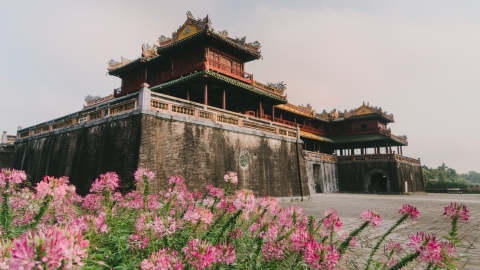Lucky Temple in Osaka
During the late Nara period (8th century), amidst the majestic and tranquil natural scenery of this mountainous region, twin brothers Zenchu and Zensan were attracted by the pure and sacred beauty of this place. In 727, they built a small hut, laying the first foundation for the temple that would later become famous. In that peaceful space, the two brothers diligently practiced Buddhism, searching for enlightenment and peace of mind.
The good news spread far and wide, and the sacredness of this place gradually spread throughout the region. During the period of continuous wars, generals, before each important battle, would come to this small temple to pray. And miraculously, they all won resounding victories and made glorious achievements. These consecutive victories contributed to strengthening the belief in the sacredness of the temple, turning this place into a sacred place that people respected and admired.
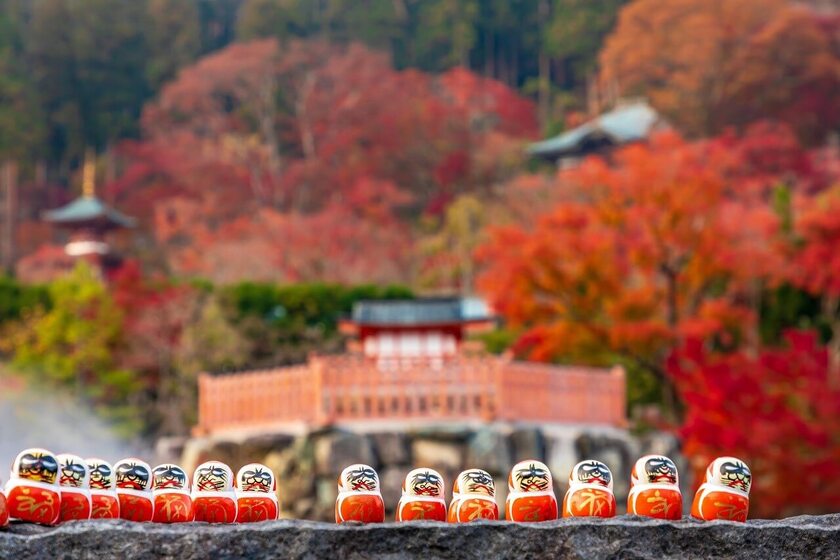
Katsuo Temple, home to thousands of Daruma lucky dolls
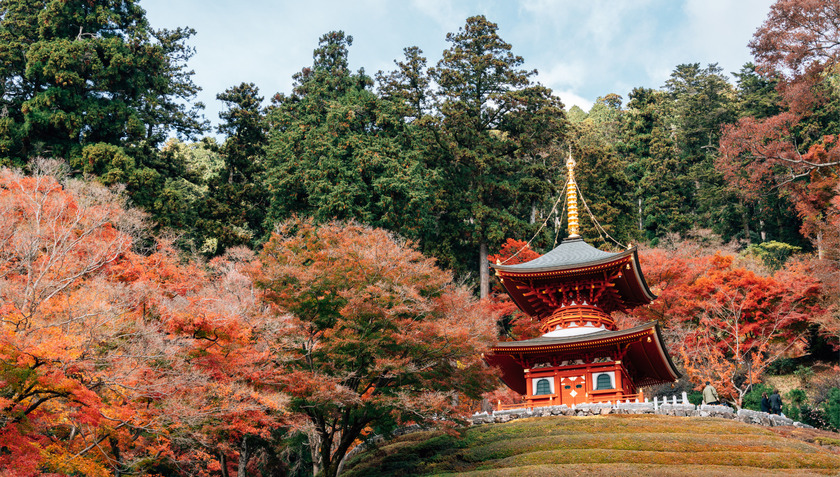
Katsuoji Temple – the place known as the fairyland of Osaka
Another miraculous story that contributed to the reputation and sacredness of Katsuoji Temple was that at the time when the emperor was seriously ill. The whole country was in anxiety and despair, people from all over came to this small temple in the mountains of Mino, sincerely praying for the wise king's health to recover soon. They put all their faith and hope in the temple's miracles, praying day and night, hoping for a miracle to happen.
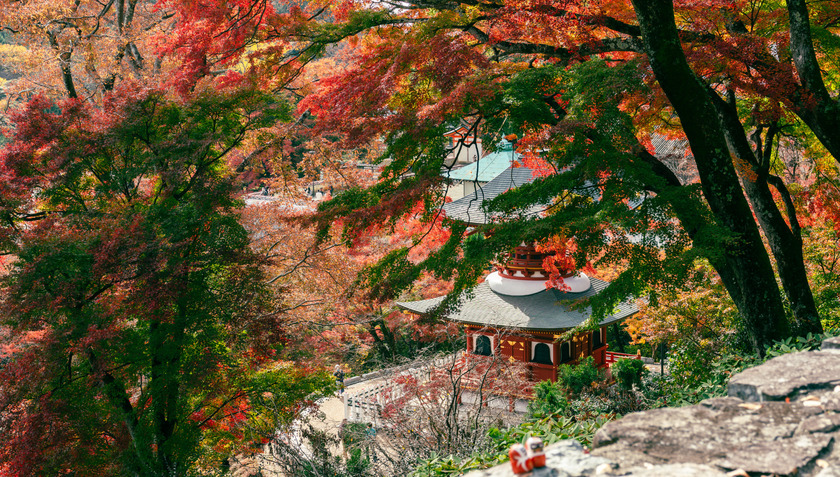
Many sacred stories are associated with the development history of this place.
And indeed, the prayers of the people were heard. The emperor's illness gradually improved and he finally made a full recovery. This event spread throughout the country, reinforcing the strong belief that it was Katsuoji Temple, with its sacredness and supernatural powers, that bestowed blessings and helped the emperor overcome his serious illness. From then on, the temple's reputation spread far and wide, becoming a sacred place revered by the people and sought out to pray for good luck and prosperity for themselves and their families.
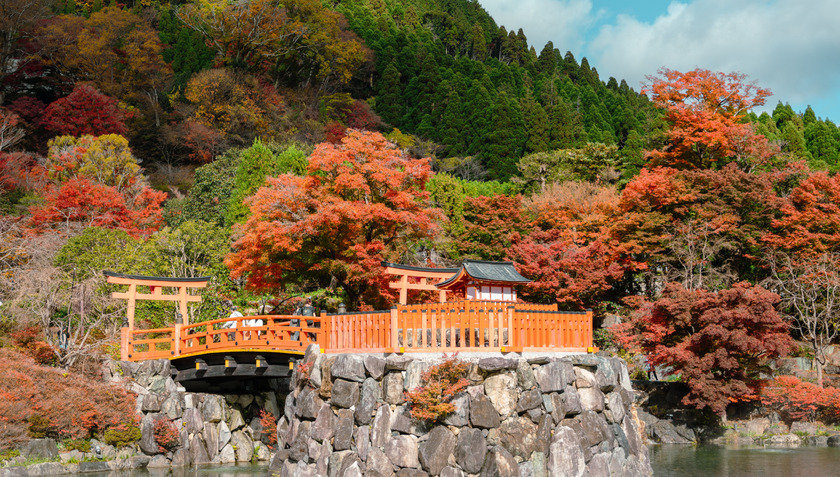
Known as the lucky temple, many people come to pray on New Year's Day.
After recovering from his illness, the emperor named this temple 勝王寺 (Katsuo-ji) as a word of thanks. But the word "Katsuo-ji" was considered blasphemous, so the temple was renamed "Katsuo-ji" but the pronunciation was still kept as Katsuo-ji.
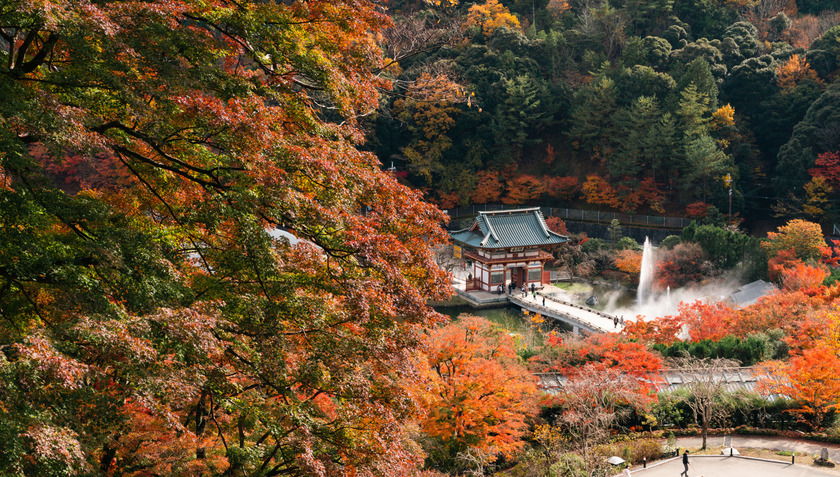
Katsuo-ji Temple is beautiful all year round, but autumn is when it is most beautiful. It is praised as the best place to see autumn leaves in the Kansai region.
From these colorful legends, Katsuoji Temple has been known by meaningful names: "Temple of the Victors" or "Temple of Good Luck". The reputation of the temple's sacredness has spread far and wide, beyond local borders, attracting people from all over the country.
To this day, the flow of pilgrims still continues to flow here, especially on important occasions of the year. They come to Katsuoji Temple with a sincere heart, carrying with them sincere wishes for a peaceful and lucky life. Some pray for success in their studies and exams, others desire for career advancement and smooth sailing, others pray for good health and family peace. All come to this sacred place with the belief that their heartfelt prayers will be heard and blessed.

"Residence" of thousands of Daruma dolls
Katsuoji Temple is not only a sacred place but also an attractive tourist destination with countless unique features that attract visitors. Just imagining it is enough to make people captivated: in the middle of the vast green mountain forest, stands out a bright red bridge, hidden in the misty fog, spanning a poetic koi pond with colorful fish swimming around. The scene is like a beautiful ink painting, both magical and lyrical.
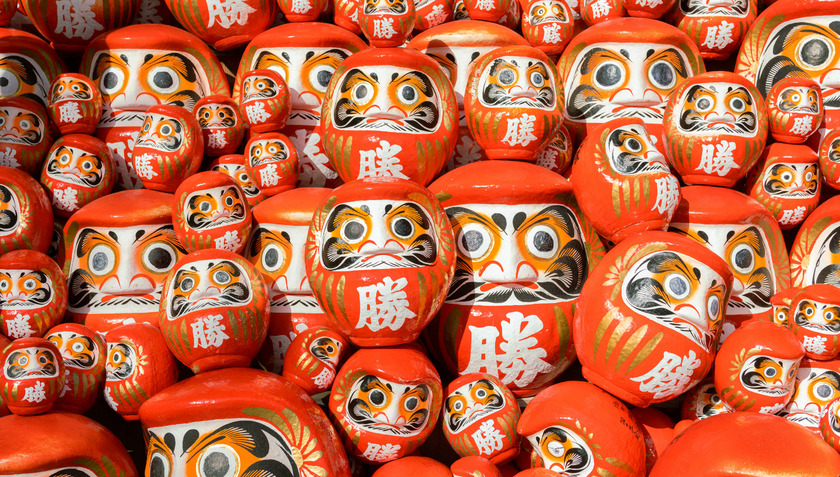
Daruma doll - "lucky god" represents the will and spirit of the Japanese people
Among the wonders that attract visitors to Katsuoji Temple, the most prominent is the image of Daruma dolls - a long-standing and extremely familiar traditional lucky symbol in Japanese culture. The round dolls, with fierce faces but bringing a sense of closeness and friendliness, have become an indispensable part of the temple, creating a unique and unforgettable impression in the hearts of every visitor.
Daruma dolls are not just a decoration but have become an indispensable part, deeply associated with Japanese culture. Images of Daruma statues can be easily found everywhere in the land of the rising sun, from ancient temples, bustling shops to simple houses. This popularity shows the wide influence of Daruma in the spiritual life of Japanese people.
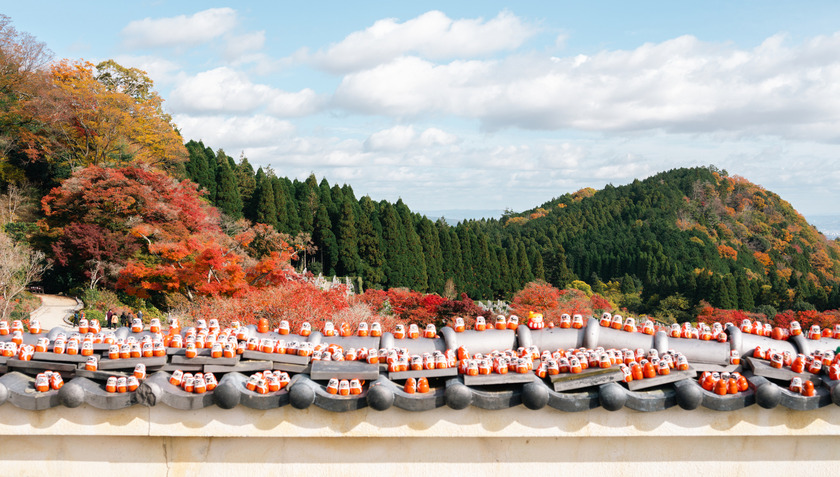
Daruma (ダルマ) is the Japanese pronunciation of the Sanskrit word Dharma, which is considered a shortened form of the word Bodhidharma.
The Daruma doll is modeled after Bodhidharma (Bodhidharma Patriarch), a historical figure who had a profound influence on Buddhism in general and Zen Buddhism in particular. According to ancient legend, Bodhidharma traveled a long way from India to China, bringing Zen teachings to spread throughout Asia. His years of diligent practice, especially the story of nine years of meditation facing a cliff, have become an endless source of inspiration for many generations. He is also revered as the founder of Shaolin Temple, one of the most famous temples in China, which is considered the cradle of Shaolin martial arts.
To commemorate and honor Bodhidharma, the person who spread Zen Buddhism, the Japanese created the unique and meaningful Daruma doll. Different from ordinary dolls, Daruma has a special shape, usually made of wood or papier-mâché, round, painted bright red, without limbs, with a thick black mustache, creating an appearance that is both majestic and friendly. Another special feature of the Daruma doll is its plain white eyes, which have not been painted.
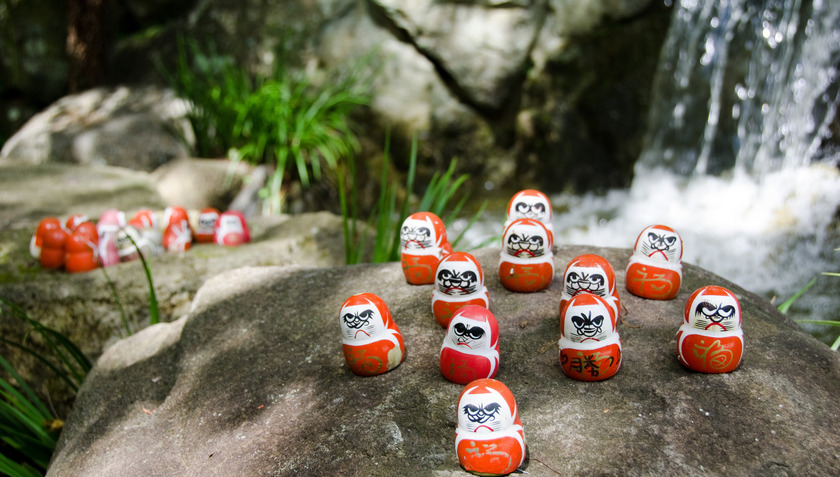
Daruma dolls are handcrafted by Japanese artisans using traditional papier-mâché, are round, hollow and heavy at the bottom. The lotus-shaped sitting posture is similar to Bodhidharma's meditation posture.
An interesting custom associated with Daruma dolls is that when buying a doll, Japanese people will silently make a wish and draw a pupil in one eye of the doll. The other eye will be left blank until the wish comes true. When the wish comes true, they will draw the remaining pupil, completing the Daruma's eyes. This action symbolizes perseverance and determination to pursue a goal to the end. It also shows a strong belief in the power of will and luck, and is a reminder of the responsibility to do your best to achieve your wishes.
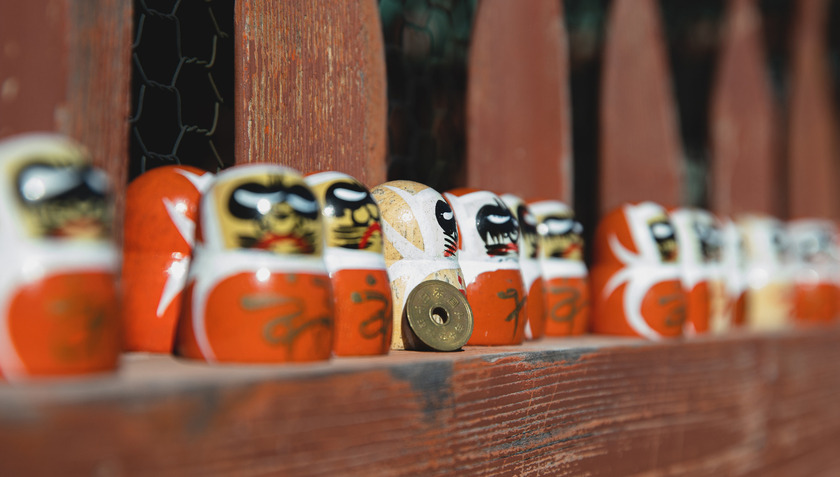
Daruma has 5 main colors: red, purple, yellow, gold and silver which symbolize different things.
One year after purchasing a Daruma doll, Japanese people take the doll back to the temple where they bought it and perform a ritual of burning the Daruma doll, whether their wish has come true or not. Some temples in Japan hold a daruma kuyo or dondoyaki ceremony, where columns of Daruma dolls are burned at the same time.
Nowadays, Daruma dolls are a popular souvenir for many tourists when traveling to Japan. In addition, they are also loved by many Japanese people and are purchased to display in solemn corners of their homes with the belief that the dolls will help them achieve their goals in life. Daruma dolls, therefore, are not only a decorative item but also a profound cultural symbol, imbued with the spirit and philosophy of life of the Japanese people.





























